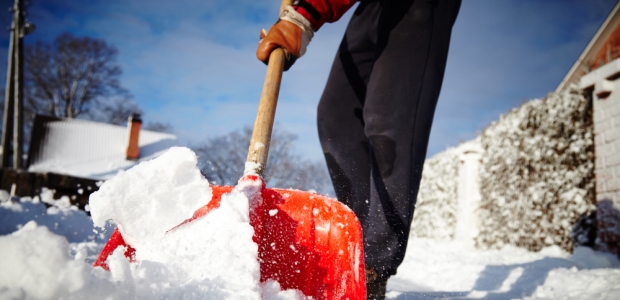
Ready for the Cold?
Both your employees and your facilities should be well prepared for cold weather hazards.
- By Paul Smith
- Dec 01, 2018
By December, employers in most regions of the United States already should have prepared their facilities for winter's cold temperatures and occasional ice and snowstorms. But a few reminders now won't hurt.
Icy parking lots and walkways are an obvious hazard for employees, delivery personnel, and visitors. Your maintenance team should be armed and ready with salt or ice melt on hand to keep these areas clear, so that everyone can get in and out of your facilities safely.
Employees may track in ice, snow, and mud as they enter a building, so management should make sure absorbent mats are placed at each entrance to minimize potential slip hazards.
Loading and shipping docks are another area where slip hazards may be present, because these are usually open to the weather for most of the day in all seasons. Metal gates and outside steps can get wet and slippery, particularly after storms, when snow and ice may melt and refreeze frequently. Non-slip mats and blast heaters should be provided to prevent falls and keep workers comfortable. (If workers bring their own space heaters to your facility, they can present fire or electrical hazards that you certainly do not want.)
Winter safety plans should cover employees who require cold weather gear, such as gloves, boots, hats, glare protection, and coats. The plans also might include food for extra-long shifts, emergency generators, transportation costs, or contractors, such as companies hired for snow removal.
Experts recommend reviewing your facility's winter safety plan early with your maintenance staff to make sure they have enough manpower to perform the tasks as outlined in it.
If your facility has emergency backup power, has it been tested, and do personnel know how to activate it if it is not automatic? Facilities also should be prepared to deal with dead batteries on vehicles and lighting, including flashlights.
Preventing Cold Stress Injuries and Illnesses
OSHA agrees that outdoor work requires proper preparation, especially in severe winter weather conditions, and that employers should provide training on cold stress, including:
- how to recognize the symptoms of cold stress and prevent cold stress injuries and illnesses
- the importance of self-monitoring and monitoring co-workers for symptoms
- first aid and how to call for additional medical assistance in an emergency
- how to select proper clothing for cold, wet, and windy conditions
Many employers provide their workers with winter weather gear, with OSHA noting that dressing properly is "extremely important to preventing cold stress." When cold environments or temperatures can't be avoided, these actions can help workers protect themselves from cold stress:
- Wear at least three layers of loose fitting clothing. Layering provides better insulation—with the recommendation to combine an inner layer to keep moisture away from the body, a middle layer of wool or synthetic to provide insulation even when wet, and an outer layer that protects the wearer against wind and rain but allows some ventilation to prevent overheating.
- Wear a knit mask to cover your face and mouth (if needed).
- Wear a hat that also covers your ears, to reduce the amount of body heat that escapes from your head.
- Wear insulated and water-resistant gloves.
- Wear insulated and waterproof boots.
- Stay dry in the cold because moisture or dampness can increase the rate of heat loss from the body.
- Keep extra clothing handy in case you get wet and need to change.
- Drink warm sweetened fluids (no alcohol).
- Use proper engineering controls, safe work practices, and personal protective equipment provided by your employer.
Safe Work Practices for the Cold
Safe work practices that employers can use include these, according to a winter weather preparedness online resource OSHA offers:
- schedule maintenance and repair jobs for warmer months
- schedule jobs that expose workers to the cold weather in the warmer part of the day
- limit the amount of time spent outdoors on extremely cold days
- use relief workers to help out on long, demanding jobs
- provide warm areas for use during break periods
- offer warm liquids to workers
Employers should monitor weather conditions during winter storms and should have a reliable means of communicating with workers and be able to stop work or evacuate when necessary, according to the agency.
New employees and someone who is returning after time away from work should be acclimatized by gradually increasing their workload and allowing more frequent breaks in warm areas, as the employees build up a tolerance for working in a cold environment, OSHA advises.
This article originally appeared in the December 2018 issue of Occupational Health & Safety.